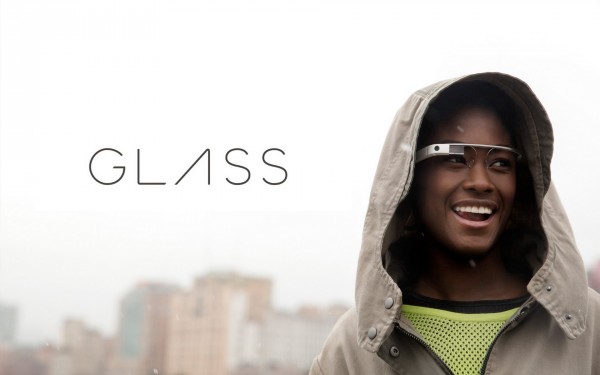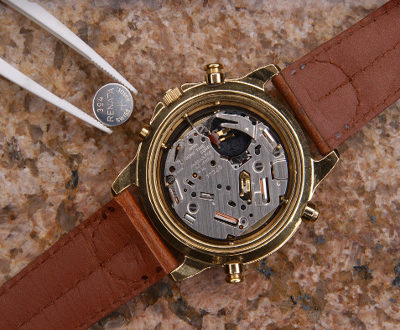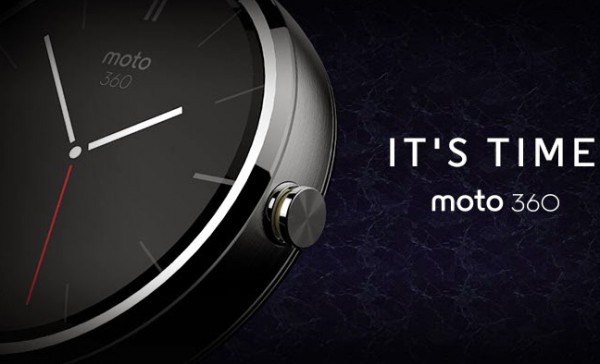
The HTC Android Wear Smartwatch has been due for quite a long time. It was first mentioned way back in 2015 and then we saw some leaked image of the mythical beast which created quite a stir. The...

Not everyone cares about fashion when it comes to their technology, but it’s a different story if it gets displayed along with your jewelry and clothes.
Now that Google Glass is available to everyone, we can expect ownership to start to increase, but not too fast, considering each headset is still $1,500 dollars. Even though the opportunity to purchase Glass is not governed by the invite system, Glass till bears the “Explorer” tag, designating that it is still mostly intended for developers and is not yet a consumer product.
When Glass does hit the mass market as a full blown consumer product, Google intends to make it–and other wearable products–as much of a standard accessory as possible, so Glass is no more out of place than a pair of glasses, a watch, a bracelet, or any other accessory. This is standard in wearable products evidenced by Android Wear’s partnership with brands such as Fossil and Apple’s trademark expansion to cover jewelry.
Google has always had a fashion forward with Google Glass (at least as much as you can be with a camera on face), but Google’s newly announced partnership with Luxottica confirms this strategy moving forward. According to Luxottica’s press release:
“…Through this relationship, Luxottica and Google… will match up high-tech developers with fashion designers and eyewear professionals. In particular, the two Corporations will establish a team of experts devoted to working on the design, development, tooling and engineering of Glass products that straddle the line between high-fashion, lifestyle and innovative technology.”
Luxottica owns over 80% of the world’s major eyewear brands, including brands such as Oakley, Ray-Ban, Giorgio Armani, Versace, and Prada to just name a few. It may be quite a feat to design Glass so that the camera and Glass module are hidden, but it is not unrealistic for this partnership with Luxottica to incorporate Glass into stylish eyewear.
So far, most wearables have found themselves in a sort of paradox, where the wearable is intended to replace a fashion accessory, but most wearables are not necessarily fashionable due usually to either size or design. If Glass is intended to be worn in place of glasses, then Glass must be able to function as a fashionable alternative to standard glasses, which is something this partnership with Luxottica will help accomplish.
What we’ve seen of the Moto 360 so far suggests that it will indeed be not only a functional, but stylistically appealing accessory. As the hardware and software improve and developers and designers are able to do more with less, it will be easier and easier to incorporate technology into our every day fashion choices, but until then, we have partnerships such as Google and Luxottica to help us get there.
Source: Luxottica
Be social! Follow Walyou on Facebook and Twitter
Read more on Walyou, Kairos Aims to Create Best Smart Mechanical Watch, New iOS 8 Features Announced by Apple

Portable technology keeps getting smaller, but battery life often suffers. A new microprocessor from Ineda Systems could change that trend completely.
One major focus for technology the past decade or so has been miniaturization and battery life. We’ve seen the trend extend from laptops, to smartphones, to tablets, to wearables. Making technology portable is great, but it needs to be big enough to have a battery that will store enough power to last more than just a few hours.
Battery life has been one of the biggest struggle of the wearable. While the time it takes to deplete a full charge for most devices is just as much–if not more–than the average smartphone, that may not be enough for many, since a smartwatch is being compared to it’s predacessor–actual watches–which could go years without being charged.
As a result, many of the people that buy smartwatches only wear them for a short time. The added hassle of remembering to charge a device that replaces the watch–which is historically amongst the most reliable technology ever invented–results in most people discontinuing use in the first six months or less.
That’s where Ineda Systems comes in. The 3 year old startup claims to have developed a microprocessor specifically for wearables that lowers power consumption so much that devices using it can last as long as 30 days. That type of battery life could go a long way towards encouraging mainstream adoption and continued use of wearables.
Peoduct deals should be anounced in the next 3-6 months. The company’s board has strong ties to Samsung and Motorola, which in turn are both also hardware partners for Google Wear, which also launches this summer, so such a technology couldn’t come at a better time.
Ineda Systems hardware is already in customer trials, so it’s possible it will be in the first generation of Android Wear devices, such as the Moto 360, but we won’t know for sure until we get a full spec list for that equipment.
It isn’t specified if the same technology can be adopted by smartphones or other computing devices, but advancements in battery life such as the ones being made by Ineda Systems will no doubt spur additional innovation and improvement for anything that uses a battery.
Source: re/code
Be social! Follow Walyou on Facebook and Twitter
Read more on Walyou, Google Might Become Your New Favorite Carrier,The Quantified and Augmented Self

I run, but never walk. I have hands, but no arms. A face, but don’t talk. No eyes, though my name disagrees. Oh, I also just got smarter. I’m a watch.
Although calculator watches have been around since the 1970s, true mobile computing hasn’t come on a wrist strap until the past couple of years, rising in popularity when the Pebble smartwatch became one of Kickstarter’s most successful campaigns.
The market is still extremely new, though, and most ecosystems have yet to carve out a proper place for the smartwatch. Watches like the Pebble and Samsung Gear definitely fill a niche, but both lack true integration with our existing cloud services and serve mostly as expanded notification services.
Sundar Pichai–Google’s SVP of Android, Chrome, and Apps–just announced at SXSW last week that Google would soon be dropping a wearables SDK for developers, and Google came through in Spades earlier this week with Android Wear and the announcement of some incoming watches and future hardware partners.
Android Wear appears to be heavily derived from Google Now, just in watch form. The full range of features has yet to be unraveled, but it appears to be Google Glass on a wrist strap. Whether it will completely cannibalize from Google Glass, of if each will have their own place in the Google device ecosystem remains to be seen. Although many geeks will gladly wear both regardless of how many features are replicated.
Right off the bat, Motorola and LG both have devices incoming, but the the Moto 360 was the only one featured alongside the Android Wear announcement. In addition to LG and Motorola, Asus, HTC, and Samsung are also hardware partners as well as several fashion brands, such as Fossil.
The Moto 360 appears to be a gorgeous device based on the released images. The 360 features a circular watchface and what appears to be a very vivid display. More information will be available closer to the launch this summer, but information on the display and battery life should be the most eagerly awaited.
LG’s smartwatch is supposed to launch “next quarter,” but not many additional details were given. We’ll likely see quite a few OEMs releasing watches this year since we already have a smartwatch incoming from HTC (maybe we’ll heat about it at their event on the 25th).
It’s unclear what Samsung’s plans are in the category since they have the biggest existing watch portfolio and just recently released their new lineup running Tizen instead of Android. They are listed as a hardware partner, though, so they will either be releasing new hardware eventually, or we will see yet another OS switch for the Gear lineup.
The partnership from Fossil is likely the most intriguing as it suggests the beginning of an industry shift. This will definitely put more smartwatches on more wrists. In the same way that smartphones replaced phones, smart watches will replace watches.
We have yet to see anything in this category from Apple, but Jonny Ive and Tim Cook have an uphill battle to fight unless Apple can also establish a large portfolio of watch manufacturer support. When manufacturers like Fossil are making Android Wear devices, Apple producing their own watch lineup won’t be enough to hold a proper marketshare.
It won’t happen overnight, but our products are all getting smarter. Provided Android Wear is not too intrusive and doesn’t significantly detract from the simplistic experience the world has expected from analog watches over the last 100 years, we will likely see more than half of watch wearers using a smartwatch in less than a decade.
Source: Android Central, BGR
Be social! Follow Walyou on Facebook and Twitter
Read more on Walyou, The Exetech XS-3 Provides Smartwatch Diversity, Tizen’s Role in the Mobile OS Race